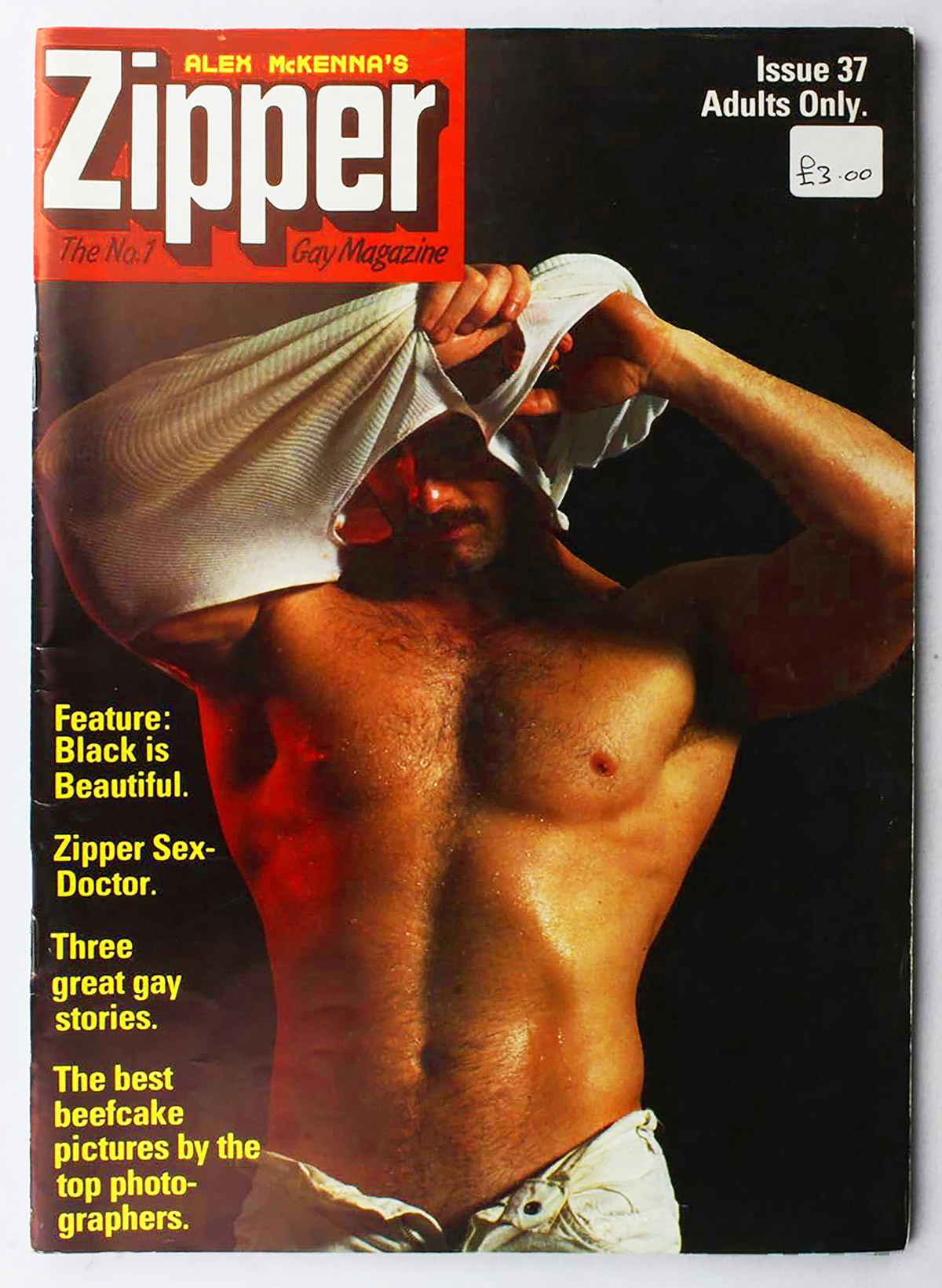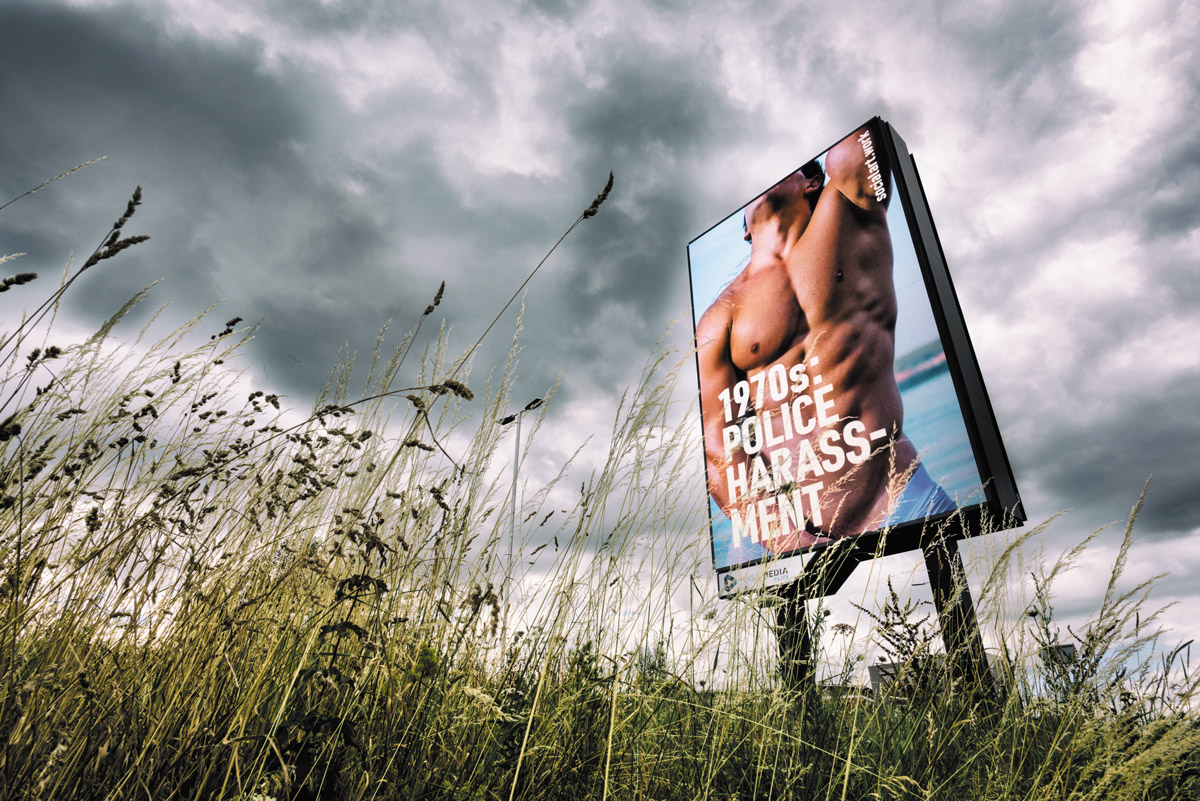We use the cookies _ga, _gat, _gid to collect anonymous data about how you use this site. OK.

2022.3.1
1970s: Police Harassment, 2022
2022
Digital billboards
1 of 5 from
Five Decades of Pride
352 x 540px, 352 x 576px, 480 x 720px, 504 x 756px, 576 x 880px, 600 x 280px, 612 x 306px, 640 x 1152px, 696 x 360px, 720 x 357px, 864 x 432px, 880 x 576px, 900 x 450px, 1080 x 1920px, 1224 x 324px, 1280 x 360px, 2160 x 3840px jpeg RGB colour
July 2022
UK-wide
Five Decades of Pride
was created to commemorate on 1 July 2022 the 50th anniversary of the first Gay Pride march in the UK.
The original Pride march was a bold political statement with high stakes. By effectively outing themselves, marchers could lose their jobs or their homes, or both. There was no equality legislation, no protected characteristics, no safeguards. A person could be fired or evicted simply for being gay.
As UK society became more liberal, some LGBT+ activists feared that Pride was becoming more of a party than a protest.
In the series
Five Decades of Pride,
Firrell evokes the essential boldness and activism of the original Pride march. The artist invited the LGBT+ community, activists and their allies to reflect on the most important issues facing the community in the 1970s, the 1980s, the 1990s, the 2000s and the 2010s.
5 key LGBT+ milestones were identified, one for each decade, and these became the subjects of the 5 artworks in the series.
According to the artist, it is impossible to separate gay sex from gay politics. Gay porn magazines of the 1970s and 80s had a particular look and feel. Firrell wanted to reflect this sexualised aesthetic in the billboard artworks; in effect, to bring an element of risk into the commemorative works by bringing gay sex itself out into the streets. This strategy also identified the artworks immediately as being of ‘gay interest’.

Zipper
magazine; gay porn from the 1980s.
s2022.3.1
This would prove problematic for some of the participating billboard companies who feared the imagery would be interpreted as ‘men wanking off’, which was, of course, the artist’s intention.
In the 1970s, it was common practice for the British Police to entrap gay men into committing the crime of ‘persistent importuning’.
Attractive young policemen in 'plain clothes' would approach gay men in public toilets or as they left well-known gay venues. The young officer's 'plain clothes' would usually consist of a tight white t-shirt and tight jeans, or similar. The gay community dubbed these officers 'pretty policemen'.
Source material for an early 'police harassment' prototype abandoned by the artist.
s2022.3.1
The officer would propose sex and invite the gay man back to 'his place'. A few streets away, they would be joined by a second officer and the arrest would be made for ‘persistently importuning for immoral purposes’. Police officers would also hide in the ceilings of public toilets so they could spy on men using the toilet and arrest anyone engaging in consensual same-sex acts.
These police activities caused consternation amongst clear-thinking politicians, not least because the police's resources were being used to initiate crimes and then make arrests for them. Alfred Dubs, Labour MP for Battersea, summed up the situation during a parliamentary debate on Monday 29 Oct 1984 in favour of amending the law:
'To put it bluntly, police officers have been acting as
agents provocateurs.
Not for nothing are the police described as ‘Our boys in blue jeans’.
‘Matters are serious if police officers not only spy on what happens in public lavatories, but go into homosexual clubs, dressed like members of those clubs, with the sole aim of entrapping people into doing something that leads to a criminal charge. If the police had not been present, there would have been no offence, because there would have been no other victims.
‘That sort of activity is a dubious one for the police to engage in, especially when people are subsequently charged and no one but a police officer appears as a witness or victim.'
The five artworks in the series
Five Decades of Pride
were displayed on 1 July 2022, 50 years to the day since the UK’s first Pride march.



